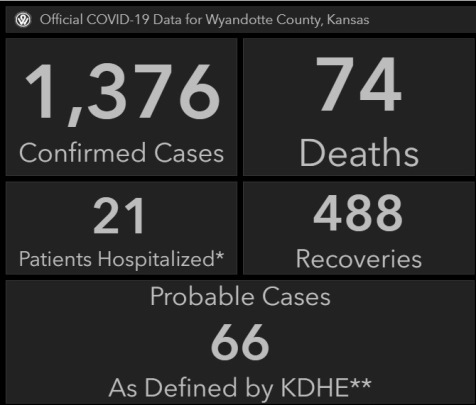
High schools in Kansas were allowed to start practices on Monday, and doctors at the University of Kansas Health System on Tuesday said there are new guidelines in place for them and for other young athletes to follow.
Dr. David Smith, medical director of youth sports medicine at the KU Health System, said it was exciting to see youth sports starting again, although he is concerned that they may not be able to keep going if they have an incident occur.
Each organization or league may have its own health guidelines, and the guidelines at the high school level were developed with the assistance of doctors.
Coaches may sometimes know a player’s family situation, but not always, according to the doctors. If a player has a family member at home with an illness such as a heart patient or cancer victim, it could factor into a decision on whether or not the youth should play sports, according to the doctors.
Dr. Smith said he would encourage coaches to talk to players and find out how their families are doing to help them make any decisions about playing. It is a decision that each family will have to make and weigh the risks, according to the doctors.
Dr. Smith offered six health tips for youth sports, including social and physical distancing; increasing hand washing and equipment cleaning; don’t touch – keep your hands away from your face; illness, be aware of it and watch for fever, cough and chills; please cough into your elbow; and stay home if you’re ill.
KSHSAA Executive Director Bill Faflick said best practices start with the equipment, and not sharing it. Young athletes should stay closer to home and go to places where they have good health practices in place. Student athletes should self-report any illnesses and the coach should be ready to deal with it.
If a young team member gets sick with COVID-19 during the practices or season, it could result in other team members being quarantined.
Dr. Hawkinson said most sports, such as baseball and soccer, should be able to physically distance. Football is different, he added. Players probably won’t be wearing a mask while they are active on the field, so it is important to maintain distance from each other.
Being inside a closed space could be the biggest risk factor for some youth, and outdoors is better than indoors, he said.
Faflick said as coaches, they are teaching and modeling for their students, and have a civic responsibility to take care of the greater community. Student athletes have a responsibility at home and in the community, to do the right thing, he said.
Dr. Hawkinson said it was very important for everyone to continue social distancing and hand hygiene, as well as wearing a mask.
Dr. Hawkinson said KU Health System had 17 positive COVID-19 patients on Tuesday, the same number as on Monday. Four of the patients were in the intensive care unit. KU Health System continues to have new admissions as well as recoveries, according to Dr. Hawkinson.
Wyandotte County reported a total cumulative 1,375 positive COVID-19 cases on Tuesday, with 74 deaths and 21 patients hospitalized.
The KU doctors’ news conference is online at https://www.facebook.com/kuhospital/videos/709621863122447/.
The UG’s COVID-19 information page is at https://alpha.wycokck.org/Coronavirus-COVID-19-Information.
Wyandotte County is currently under the state’s Phase 2 plan at covid.ks.gov.
The state plan’s frequently asked questions page is at https://covid.ks.gov/wp-content/uploads/2020/05/Reopening-FAQ_5.19.2020_Final.pdf.
Additional guidelines from the governor’s office about Phase 2 are at https://www.wycokck.org/WycoKCK/media/Health-Department/Documents/Communicable%20Disease/COVID19/AdAstraUpdate519.pdf.
Test sites are listed at https://wyandotte-county-covid-19-hub-unifiedgov.hub.arcgis.com/pages/what-to-do-if-you-think-you-have-covid-19.
The CDC’s COVID-19 web page is at https://www.cdc.gov/coronavirus/2019-nCoV/index.html.
